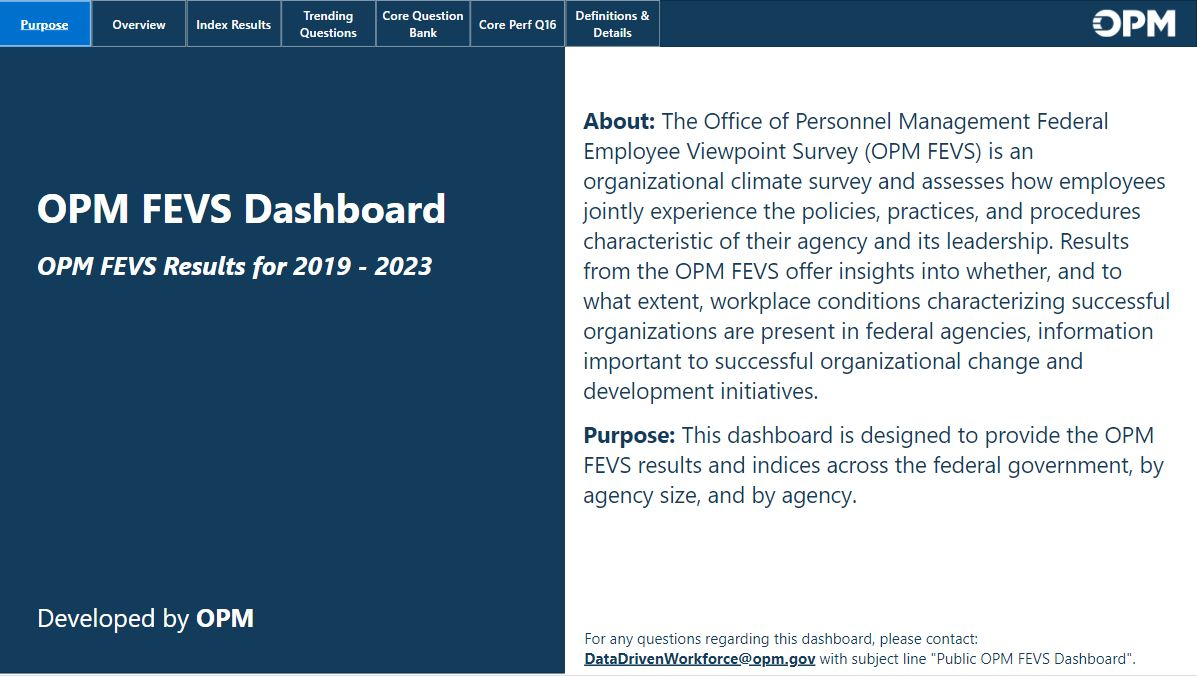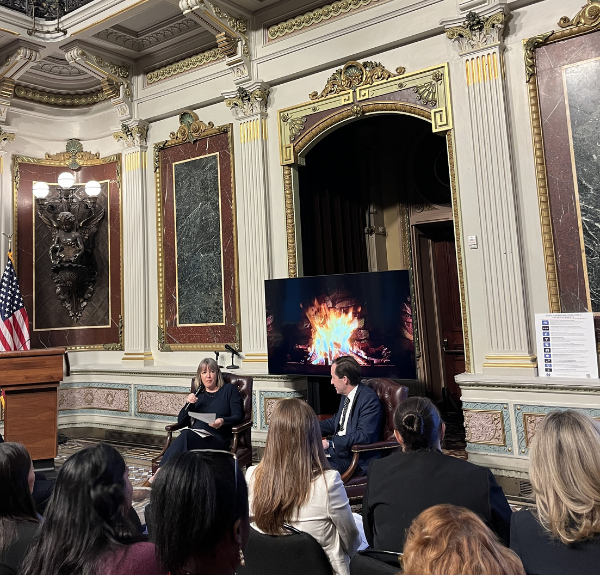Today the Office of Management and Budget (OMB) released its latest round of updates to the Biden-Harris President’s Management Agenda (PMA). This agenda prioritizes the administration’s efforts to build a more equitable, efficient, and accountable Federal Government through workforce development, service improvement, and responsible financial management.
This quarter OMB saw significant progress across each of the three priority areas. PMA teams are leveraging data to expand workforce development opportunities, supporting growth for service delivery providers, and advancing federal procurement and financial management.
Empowering the Federal Workforce
The Biden-Harris Administration prioritizes strengthening and empowering the federal workforce. By listening to employees and expanding opportunities to support both current and future workers through training and extensive hiring efforts, PMA teams are helping to make the Federal Government an ideal, modern, and forward-thinking employer.
The Office of Personnel Management (OPM) publicly released the comprehensive 2023 Federal Employee Viewpoint Survey (FEVS) Governmentwide Management Report. This report provides a deep dive into the survey results, offering valuable insights for federal agencies and employees alike. OPM also launched a new dynamic public FEVS dashboard that allows you to explore the data in more detail, filter by agency demographic group, and other factors.

Check out the FEVS Dashboard to further explore data.
Highlights include a one percentage point increase in the governmentwide employee engagement index, which moved to 72%, tying the five-year high set in 2020, and a two percentage point improvement in the governmentwide Diversity, Equity, Inclusion and Accessibility Index to 71%.
In continuing to promote pay equity and fairness, OPM released a final regulation that prohibits the use of previous non-federal salary history in setting pay for federal employment offers. By helping to close gender and racial pay gaps, the rule is one more step to attract and retain a qualified, effective workforce drawn from the full diversity of America, which aligns with the PMA values of creating a more equitable government.
OPM also released four new cross-government hiring opportunities (“pooled hiring”) specifically focused on IT and Data Management to continue efforts to bolster the Federal Government’s tech talent pipeline. These approaches allow qualified candidates to submit one application that opens doors to roles across all agencies. Governmentwide technology talent programs like the Presidential Innovation Fellows, U.S. Digital Corps, and U.S. Digital Service also ramped up their efforts to recruit AI talent in 2024, aligning with national priorities in artificial intelligence.
This quarter, agencies released multiple trainings to continue to empower the federal workforce including Designing an Assessment Strategy in the Federal Hiring Process and a Chief Financial Officers Council (CFOC) Career Planning and Training Tool. The CFOC training tool provides a medium for 140,000 financial management professionals to access training aimed at enhancing their current and future careers.
To read all of the new Priority 1 milestones and goals, check out the complete Workforce Priority page.
Streamlining and Improving Customer Service
From daily necessities to navigating crises, every interaction shapes the public’s trust in government. Recognizing this connection, the PMA prioritizes Delivering Excellent, Equitable, and Secure Federal Services and Customer Experience. This quarter’s update showcases progress across High Impact Service Providers (HISPs), Life Experience Projects, and digital tools.
To support HISPs, a cohort style workshop series was developed to facilitate peer learning to build and develop core CX capabilities. These topics included CX and digital organizational design, service blueprint and journey map development, the new digital experience guidance, and recruiting, hiring, and retaining CX and digital talent. For the latest updates on HISP customer feedback data, see the CX Trust Dashboard for HISP Trust Scores and the Customer Feedback Data Dashboard for drivers of customer experience. Additionally, we are excited to announce three newly designated HISPs: the International Trade Administration, the Defense Counterintelligence and Security Agency, and the Indian Health Service. They will join the ranks of those publicly reporting customer feedback and are currently collaborating with OMB to develop and launch surveys that capture valuable insights from their customers.
Across Life Experience Projects, individual project teams made significant progress in implementing and scaling their pilots. Under the Disaster Recovery Life Experience, the team developing a trauma-informed care approach added several new resources for agency and front-line staff to have the knowledge, skills, and support to take a trauma-informed approach when engaging disaster survivors. These resources include a workshop and consultation tools that expand upon the existing video series and course guidebook that focus on three areas: understanding trauma and its impact; recognizing trauma and responding sensitively; and taking care of yourself and your team. The Approaching Retirement team also worked closely with community-based organizations and members of the public to develop a series of resource guides designed to help older adults, caregivers, and front line staff make informed decisions about healthcare, finances, housing and food.
Finally, the Strategy 3 teams continue to build out shared resources and tools to support implementation of recent OMB guidance on Digital Experience and Digital Accessibility. Notably, Digital.gov is now a central hub for agencies seeking resources and features to improve their digital experience delivery. The platform offers over 50 topic pages covering various aspects such as project management, design, and data visualization.
To read all of the new Priority 2 milestones and goals, check out the complete Customer Experience page.
Business of Government
For Priority 3, Managing the Business of Government, teams continue to meet the demands of a changing world. The official release of the Better Contracting Initiative (BCI) is a collaborative effort to advance and innovate the Federal Government’s approach to procurement. On January 25, Performance.gov hosted a PMA Webinar that provided a deep dive on the BCI and included remarks from Priority Area Lead Don Graves, Deputy Secretary of Commerce. The BCI is an effort by the Biden-Harris Administration to advance the governmentwide approach to buying goods and services. This initiative aims to save taxpayers billions of dollars each year through securing better deals, leveraging data, getting our requirements right the first time, and reducing risk in our contracts while ensuring fair and diverse contracting opportunities. Through the BCI, government procurement will operate more efficiently and ethically, ultimately benefiting both taxpayers and businesses alike.
Additionally, the Council on Federal Financial Assistance (COFFA) established their Year 1 priorities, which focus on creating partnerships across federal grant-making agencies. This includes creating a central platform for policy, oversight, and technology, streamlining processes for all involved, and aligning with the administration’s priorities in service delivery, equity, and rebuilding. Working together, the COFFA members will begin identifying projects to complete within the next year to accomplish these priorities.
To read all of the new Priority 3 milestones and goals, check out the complete Business of Government page.
From boosting the workforce to improving critical services, the Biden-Harris Administration’s PMA efforts will continue to make progress in the coming months, delivering on key priorities for Americans. We invite you to continue to track our progress and keep up with events by following Performance.gov on LinkedIn and Twitter (X).
Stay Informed
We will continue to update Performance.gov quarterly with progress on agency and PMA priorities. Subscribe to our newsletter to receive updates straight to your inbox.




